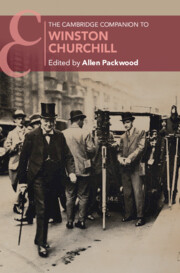69 results
Introduction
-
-
- Book:
- The Cambridge Companion to William Morris
- Published online:
- 03 May 2024
- Print publication:
- 23 May 2024, pp 1-12
-
- Chapter
- Export citation
6 - Families and Young Black Changemaking
-
-
- Book:
- Young Black Changemakers and the Road to Racial Justice
- Published online:
- 08 February 2024
- Print publication:
- 15 February 2024, pp 98-116
-
- Chapter
- Export citation
Chapter 34 - Messiaen in France Today
- from Part IV - Concepts and Legacy
-
-
- Book:
- Messiaen in Context
- Published online:
- 09 November 2023
- Print publication:
- 30 November 2023, pp 314-321
-
- Chapter
- Export citation
7 - COVID-19 and Racial Justice in America
- from Part II - COVID-19, Disparities, and Vulnerable Populations
-
-
- Book:
- COVID-19 and the Law
- Published online:
- 27 October 2023
- Print publication:
- 09 November 2023, pp 105-115
-
- Chapter
-
- You have access
- Open access
- HTML
- Export citation
Chapter 1 - Power and Purpose: LBJ in the Presidency
-
-
- Book:
- LBJ's America
- Published online:
- 19 October 2023
- Print publication:
- 19 October 2023, pp 15-43
-
- Chapter
-
- You have access
- HTML
- Export citation
10 - Legacy
- from Part II - The Benefits of Creativity
-
- Book:
- The Creativity Advantage
- Published online:
- 27 July 2023
- Print publication:
- 29 June 2023, pp 137-146
-
- Chapter
- Export citation
28 - How NOT to Be Afraid of Dying and Ensure that Your Family Remembers Your Death as a Peaceful One
- from Part IV - Caring For Your Soul
-
-
- Book:
- The Gift of Aging
- Published online:
- 08 June 2023
- Print publication:
- 08 June 2023, pp 196-203
-
- Chapter
- Export citation
21 - Who Needs an Estate Plan? Everyone
- from Part III - Caring For Yourself and Your Family
-
-
- Book:
- The Gift of Aging
- Published online:
- 08 June 2023
- Print publication:
- 08 June 2023, pp 135-152
-
- Chapter
- Export citation
21 - Everyday Creativity as a Pathway to Meaning and Well-Being
- from Part IV - Emotions and Creative Products
-
-
- Book:
- The Cambridge Handbook of Creativity and Emotions
- Published online:
- 16 February 2023
- Print publication:
- 23 February 2023, pp 394-410
-
- Chapter
- Export citation
1 - Churchill’s Contested History
-
-
- Book:
- The Cambridge Companion to Winston Churchill
- Published online:
- 19 January 2023
- Print publication:
- 26 January 2023, pp 11-27
-
- Chapter
- Export citation
Chapter 35 - Dramaturgy
- from Part IV - Virtuous Performances
-
-
- Book:
- Shakespeare and Virtue
- Published online:
- 19 January 2023
- Print publication:
- 26 January 2023, pp 349-359
-
- Chapter
- Export citation

The Cambridge Companion to Winston Churchill
-
- Published online:
- 19 January 2023
- Print publication:
- 26 January 2023
Chapter 22 - Guillaume Apollinaire (1880–1918)
- from Part III - Poets
-
-
- Book:
- A History of World War One Poetry
- Published online:
- 18 January 2023
- Print publication:
- 12 January 2023, pp 365-378
-
- Chapter
- Export citation

A History of World War One Poetry
-
- Published online:
- 18 January 2023
- Print publication:
- 12 January 2023
Coda: Legacies of World War One Poetry
- from Part IV
-
-
- Book:
- A History of World War One Poetry
- Published online:
- 18 January 2023
- Print publication:
- 12 January 2023, pp 507-510
-
- Chapter
- Export citation
Chapter 2 - The Hippies
-
- Book:
- The Aging of Aquarius
- Published online:
- 15 December 2022
- Print publication:
- 22 December 2022, pp 13-35
-
- Chapter
- Export citation
Conclusion
-
-
- Book:
- Foundations of Socio-Environmental Research
- Published online:
- 18 November 2022
- Print publication:
- 08 December 2022, pp 740-756
-
- Chapter
- Export citation
Chapter 23 - Theorizing the Other
- from Part III - Bodies
-
-
- Book:
- David Foster Wallace in Context
- Published online:
- 18 November 2022
- Print publication:
- 01 December 2022, pp 246-256
-
- Chapter
- Export citation
Chapter 34 - Author Here, There and Everywhere
- from Part IV - Systems
-
-
- Book:
- David Foster Wallace in Context
- Published online:
- 18 November 2022
- Print publication:
- 01 December 2022, pp 368-378
-
- Chapter
- Export citation
Chapter 21 - “The Limits of His Seductively Fine Mind”
- from Part III - Bodies
-
-
- Book:
- David Foster Wallace in Context
- Published online:
- 18 November 2022
- Print publication:
- 01 December 2022, pp 225-235
-
- Chapter
- Export citation



